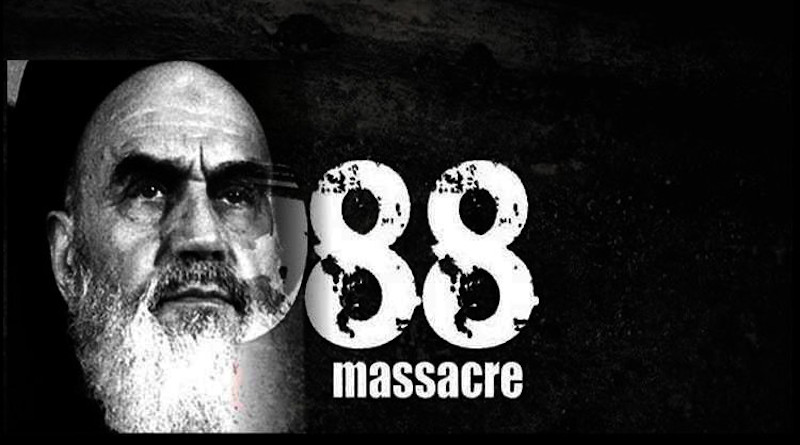35 Years Later: 1988 Massacre Has Important Lessons For Iran And World – OpEd
By Matin Karim
Iran marks the 35th year of the 1988 massacre, in which the mullahs’ regime executed more than 30,000 political prisoners in the span of a few months. Most of the victims were members and supporters of the People’s Mojahedin Organization of Iran (PMOI/MEK). Many have finished their sentences and were kept in prison because they had not abandoned their support for the PMOI. Others had been arrested for simple activities such as distributing the Mojahed newspaper.
In many ways, the 1988 massacre has become a defining moment in the history of Iran. On the one hand, it shows the viciousness of the mullahs’ regime.
In one fell swoop, under a fatwa by mullahs’ regime founder and supreme leader Ruhollah Khomeini ordered the killing of tens of thousands of prisoners for their ideals. The prisoners were tried in five-minute trials and were sent to the gallows for simply refusing to abandon their support for the PMOI. Prisoners were hanged in groups and in a brutal manner, with survivors recalling prison guards kicking and punching the prisoners as they were in the throes of death.
The victims were secretly buried in mass graves. Their families were not informed of their execution or the location of their burial. The regime persecuted the families of the victims and banned them from holding memorials for their loved ones. And regime authorities later took measures to destroy all evidence of their crimes by building roads and buildings over some of the locations where the prisoners were buried.
On the other hand, the 1988 massacre shows the role that the PMOI has played and continues to play in posing a threat to the regime.
In a recent conference in Paris titled, “Four Decades of Crime against Humanity and Impunity from Punishment,” Mrs. Maryam Rajavi, the president-elect of the National Council of Resistance of Iran (NCRI), said, “Khomeini perceived the PMOI as an existential threat to his regime’s religious and political essence. This perception stemmed from the fact that the PMOI rejected Khomeini’s regressive interpretation of Islam and refused to submit to his autocratic rule founded on the supremacy of a single jurist. Instead, the PMOI advocated for an Islam that championed freedom and equality.”
Khomeini saw his regime’s survival in the eradication of the PMOI, which is why he described PMOI members as “apostates” and called for their execution. He wanted to thus eradicate the movement and its ideology.
“Khomeini seriously felt the danger when he saw Iranian youths extensively joining the PMOI,” Mrs. Rajavi said.
Ironically, this remains one of the principal fears of the regime, which is testament to the regime’s failure in eradicating the PMOI. As more and more youth join the ranks of the Resistance Units, the network of PMOI activists that are spread across all corners of Iran, Iranian regime officials and analysts are warning that the PMOI has become the regime’s main problem.
The regime did not stop its efforts to destroy the PMOI after the 1988 massacre. It has followed up with continued arrests and execution of PMOI supporters, terrorist attacks against PMOI members abroad, a vast demonization campaign, and diplomatic deceit to put pressure on the Iranian Resistance. This includes plots against PMOI members in Ashraf 3, Albania, and an arrest warrant for 104 PMOI members issued by the regime’s judiciary.
“The main goal remains the same as the 40-year-old objective: to annihilate the resistance movement and counteract Ashraf-3, which stands as a symbol of standing one’s ground in contemporary history,” Mrs. Rajavi said.
The 1988 massacre is also a testament to the failure of the international community to hold the regime to account for its crimes against humanity. The regime has enjoyed impunity on the international front for more than four decades, which has allowed it to continue committing crimes against humanity and suppress the most basic freedoms of the people.
However, the people of Iran are clear in their demands for bringing the perpetrators of the 1988 massacre to justice, including current regime president Ebrahim Raisi and supreme leader Ali Khamenei.
Mrs. Rajavi described the 1988 massacre as “the worst massacre of political prisoners since the end of the Second World War.”
“Pursuing justice for the victims of the 1988 massacre stands as the moral compass of Iranian society in its ongoing struggle and remains fresh and indelibly etched in the annals of Iranian history,” she said.
The Iranian Resistance has been on Justice seeking campaign to prosecute regime leaders for the 1988 massacre and numerous other crimes they have committed.
“On a global scale, the moment has arrived to end the four-decade-long impunity enjoyed by the clerical regime’s leaders, shielding them from prosecution and accountability for their participation in genocide and crimes against humanity,” Mrs. Rajavi said.
Today, the 1988 massacre and its legacy is proof that a freedom-seeking movement that has arisen from the heart of the Iranian society as an extension of its century-long struggle for freedom and democracy cannot be extinguished.
This article was published by PMOI/MEK

